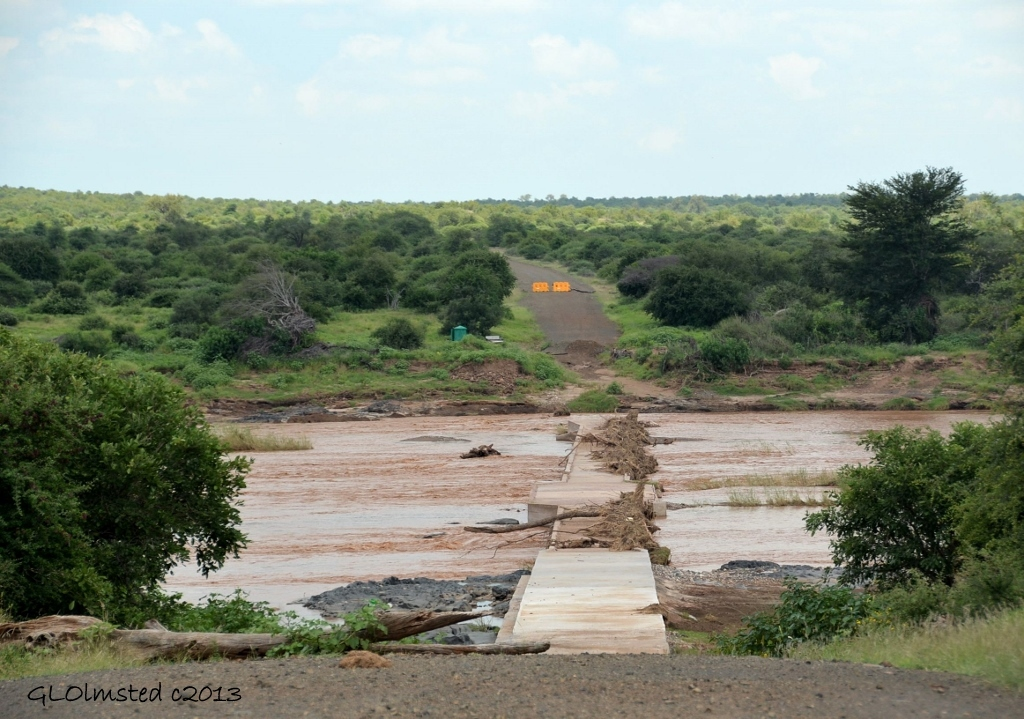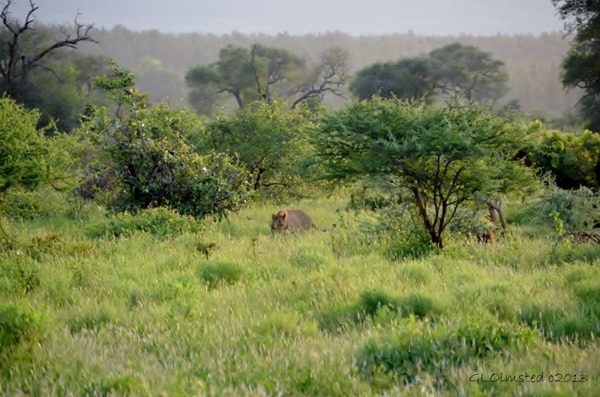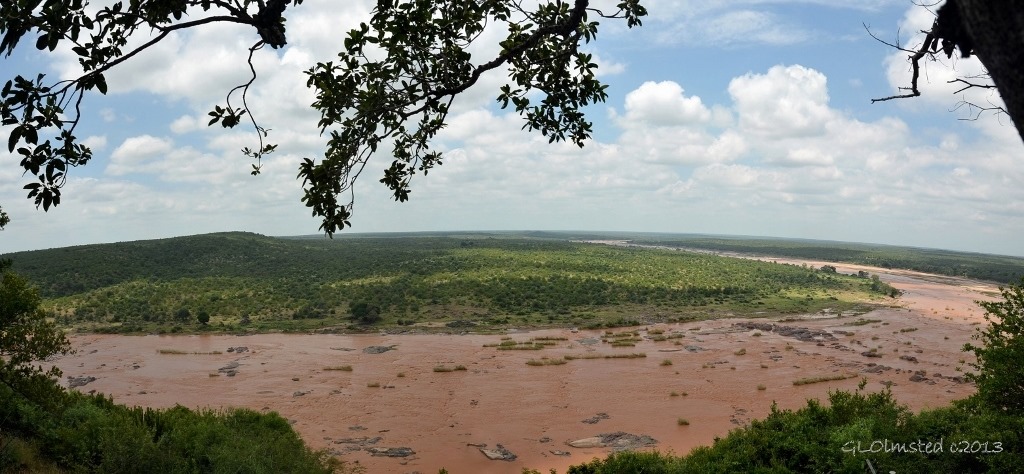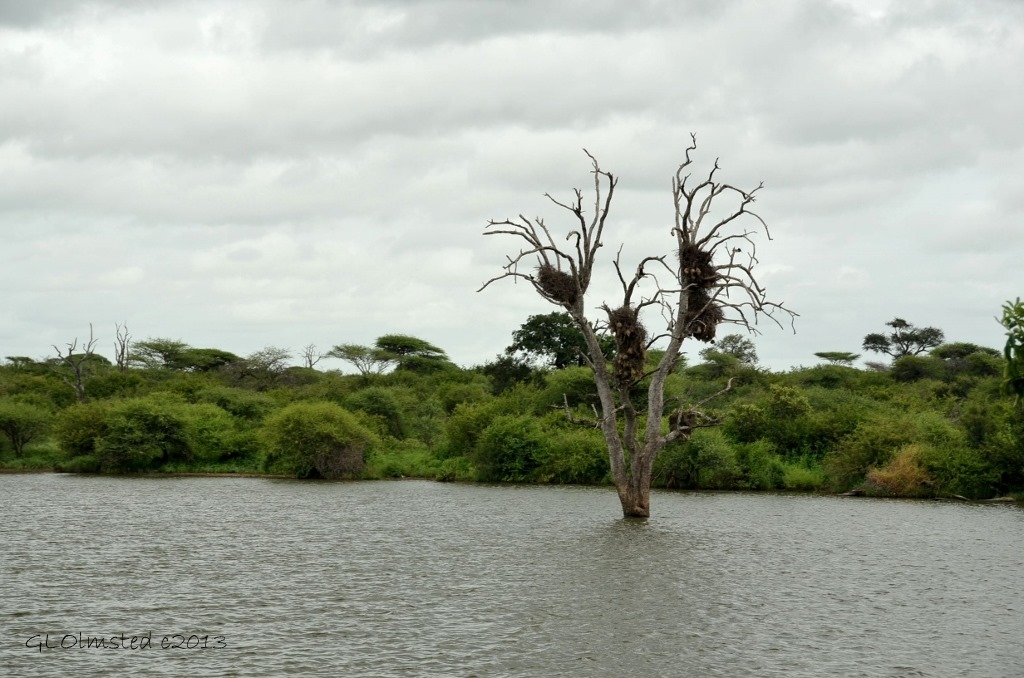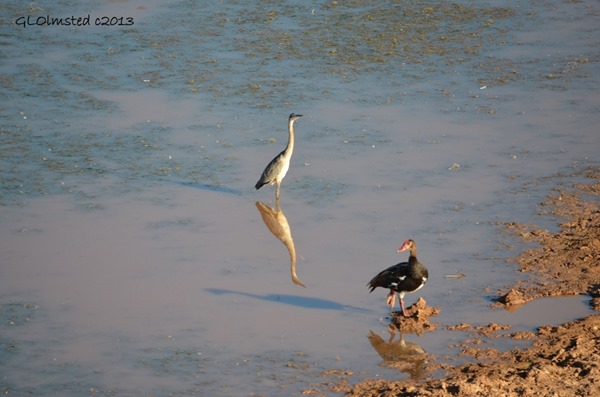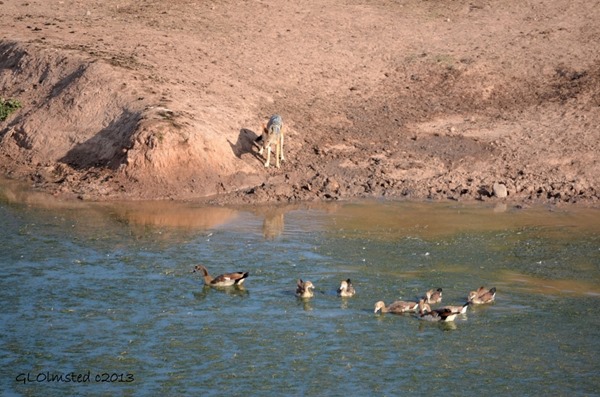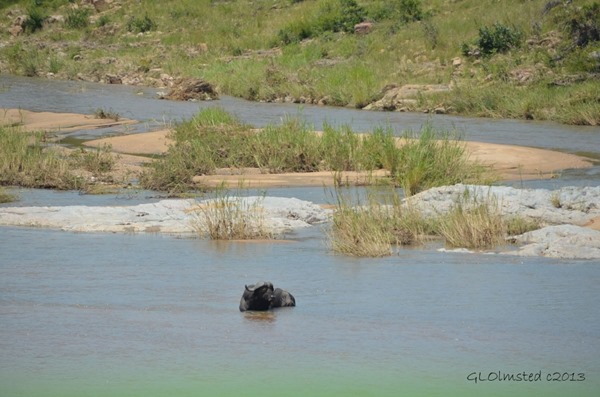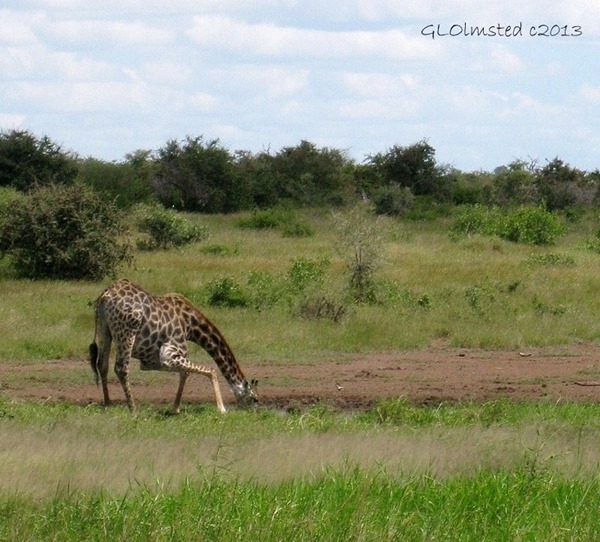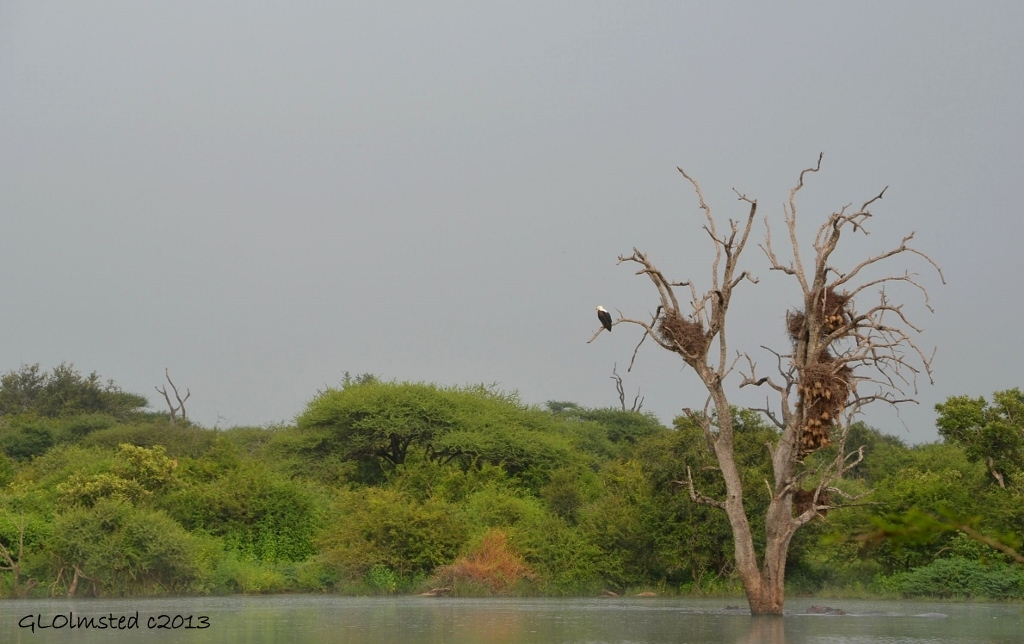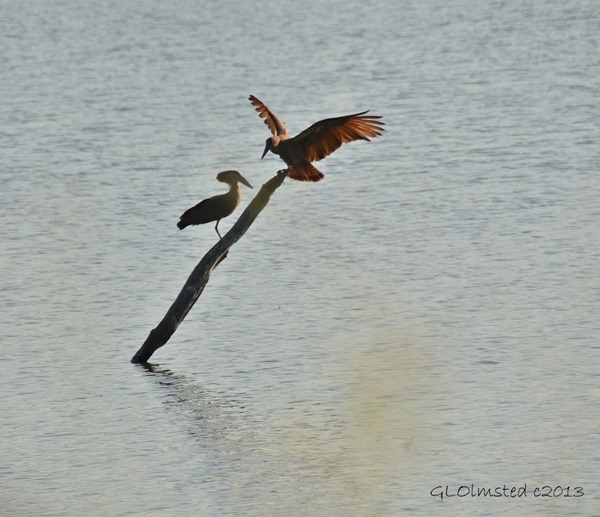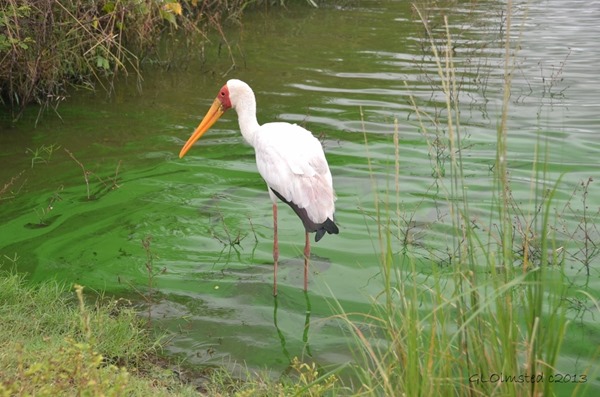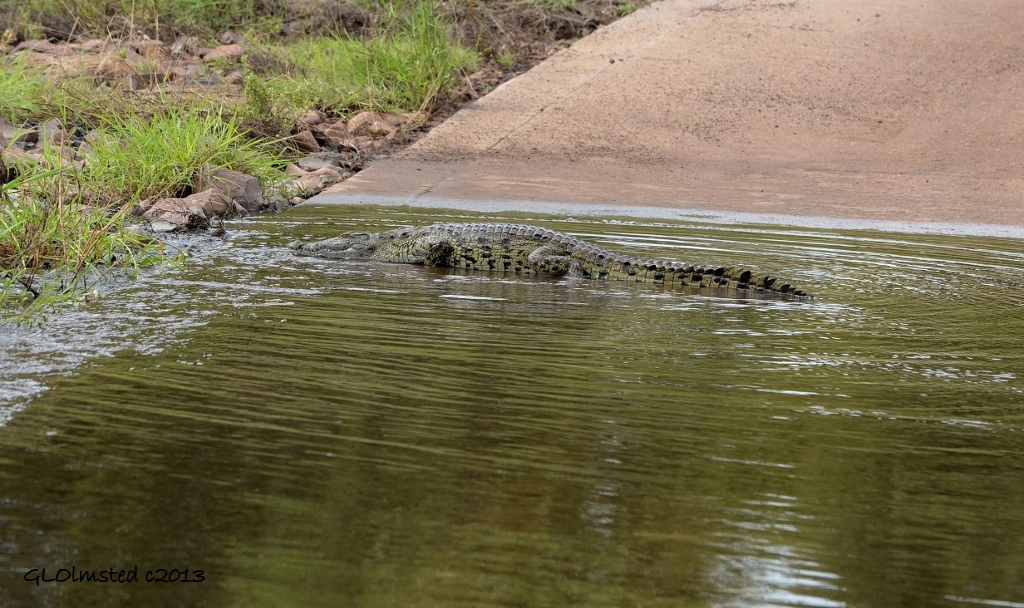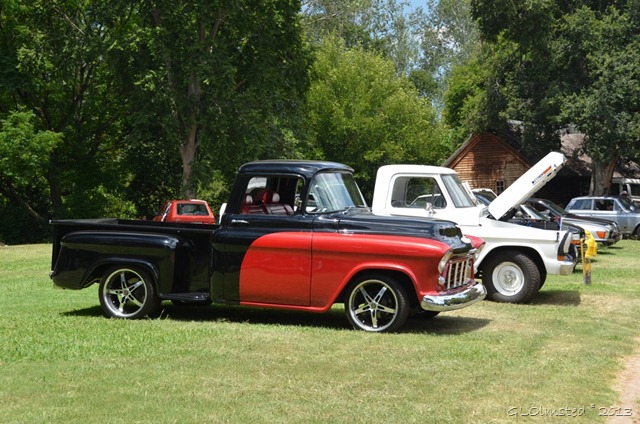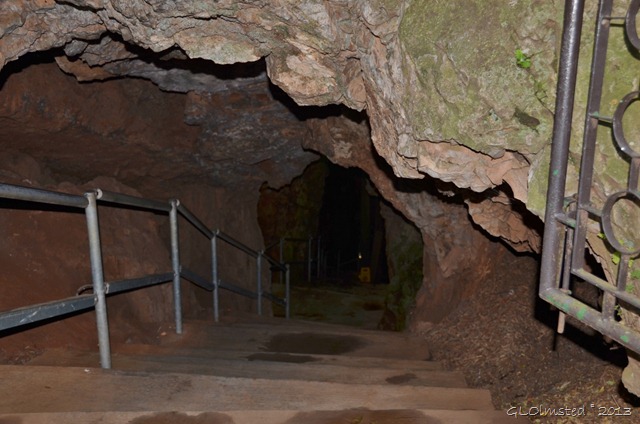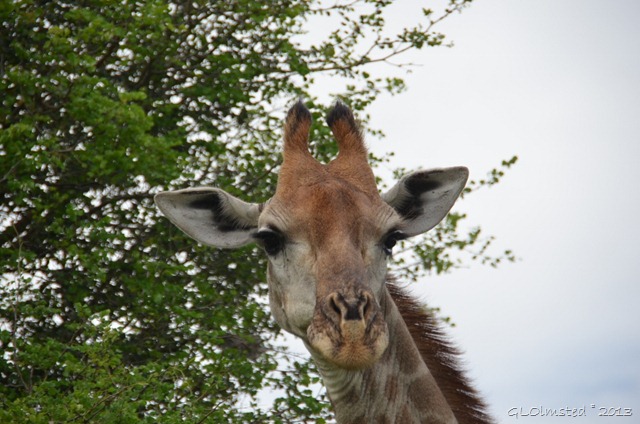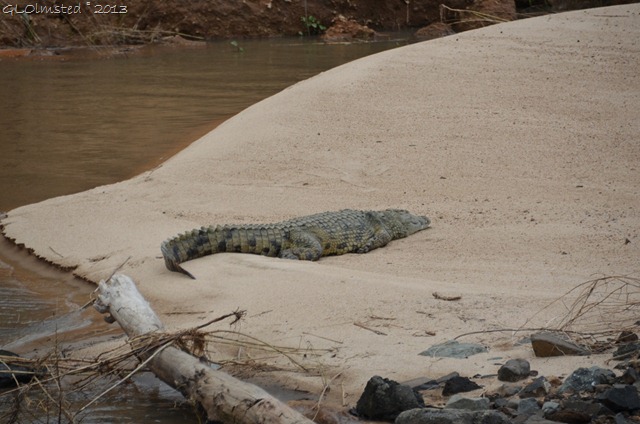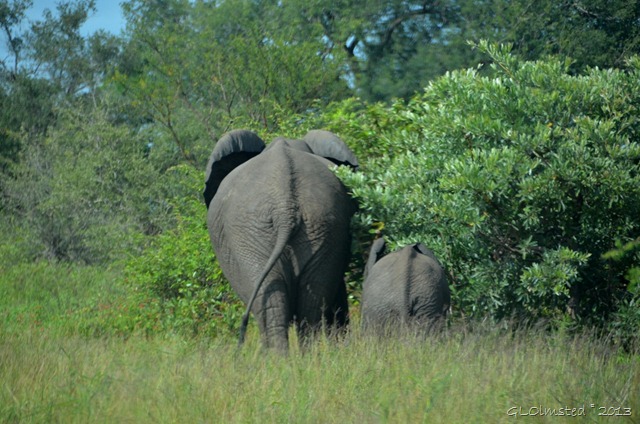Predator and prey alike must share the waters during flood and drought. Yet it can be an eat or get eaten world. Just part of the balance of nature. I love National Parks for offering at least a possibility of that balance, with us included. But that doesn’t mean I want to swim with the crocodiles.
Closed over the Oliphant’s River
Flood & drought
Just like other parts of the world, South Africa deals with the continuous cycles of flood and drought which effects wildlife and human visitors to National Parks. 1991/92 was regarded as being the lowest rain fall in living memory in many parts of the country. Yet large floods occurred in 2000 and 2013 requiring evacuations from camp areas and the closure of roads and bridges in Kruger National Park. An inconvenience for visitors but important because they reorganize the physical environment by eroding and depositing sediment, removing riparian vegetation, and redistributing nutrients.
The winter months from May to August are traditionally dry with little rain. November to March is the typical summer rainy season. Depending on the region, rainfall varies from 1.3 feet (400 mm) to 2.4 feet (720 mm) per year.
My visit during February brought a few nights of down pour yet days were sunny and dry. But because of the heavy January rains the tall grasses provided thick cover making some wildlife difficult to see, until we got near water where they provided quite a sight.
Dams & rivers
Five major river systems traverse Kruger National Park including the Luvuvhu River in the north, the Crocodile River forming the southern boundary, and the Letaba, Olifants and Sabie rivers in-between. Because this near 50 thousand acre (2 million hectare) park was once fenced, natural migration was limited so artificial water sources were added between the 1930s and 1980s by drilling boreholes to create water holes/dams, and some perennial rivers were dammed. Some dams remain open more for tourism purposes than ecosystem management.
After documenting a rise and fall in certain animal populations the park changed its water policy in 1997 in an attempt to simulate the natural distribution of water. In a natural system, the dry season will see natural waterholes disappear so animals are forced to go the rivers and larger pools. However, when the wet season hits, streams, rivers and pools fill with water providing nature with all its needs and the game moves back into the bush. At the beginning of this century fences between adjacent parks and countries started to come down allowing the animals to take up their old migratory routes.
And hanging out by the water is a good place to see wildlife although you might not expect to see Crocs, Hippos and birds in the same stretch of water, it happens. While cruising the roads in Kruger National Park, Joan and me in our car-cage, I mused about this sharing of the water. What eats what that they can all get along? Wildlife, much like humans, vary in being fish eaters, vegetarians and meat eaters.
Omnivores/meat and vegetables
OMG, they’ll eat almost anything.
Social Weavers mostly eat insects and seeds. Lots of insects over the waters where they built this large compound of community nests that consist of separate chambers.
Spur-winged geese are the largest African waterfowl. They eat larvae, pupae, aquatic animals, plant material, seeds, small fish, snails and crabs. The larger black-necked heron seen in this image is actually carnivorous eating fish, crabs, insects, reptiles, small mammals and even other smaller birds. Good thing that’s a big goose.
Black-backed jackals feed on beetles, grasshoppers, crickets, termites, millipedes, spiders, scorpions, rodents, hares, lizards, snakes, birds and young antelopes, plus occasionally fruits and berries. Their eating habits remind me of the opportunist coyotes. But this one didn’t get fowl for lunch that day.
Herbivores/vegetarians
Seems some of the largest animals survive quite well as vegetarians.
Buffalo are primarily grazers, and like to drink twice a day when they often wade into the water up to their bellies.
The hippopotamus is semi-aquatic inhabiting rivers, lakes and swamps. During the day they remain cool by staying in the water or mud and they emerge at dusk to graze on grass.
Elephants eat roots, grasses, fruit, and bark. An adult African elephant can eat up to 295 pounds (134 kilograms) of food and drink about 50 gallons (190 liters) of water each day.
Giraffe are browsers and select mainly leaves and buds on trees and shrubs. Herbs, climbers and vines are also eaten, likewise flowers and fruit are preferred when in season. Getting a drink requires being a contortionist to lower that long neck down to the water.
Carnivores/meat eaters
The ones to watch out for.
The African Fish Eagle is not limited to fish, and will feed upon flamingos, ducks, lizards, baby crocodiles and carrion. Additionally it will also happily steal catches from other birds.
The Hammerkop feeds in shallow fresh water and eats frogs, insects, fish and other water creatures.
Yellow-billed storks primarily eat small crustaceans, fish, frogs, aquatic insects, and small mammals. Because of their taste for aquatic creatures, yellow-billed storks follow the floodwaters, constantly in search of water with a high concentration of fish.
Crocodiles spend almost half their lives in water and eat pretty much anything that will get close enough to the water to be dragged in. The adult usually eat snakes, buffalo, cattle, or anything else that gets near the water. Including humans. The juveniles eat insects, shellfish and fish.
For all the above mentioned animals it’s more about being compatible and sharing the water. Well, except for maybe the crocodile.
Of course many other animals come to the waters both prey and predator and would take the opportunity to eat if offered and needed. The balance in nature is well maintained. Especially if humankind stays out of their environment. These are just a few of the animals I saw while visiting Kruger National Park in South Africa.
Do you think we humans could learn something from the wildlife about sharing the waters?

